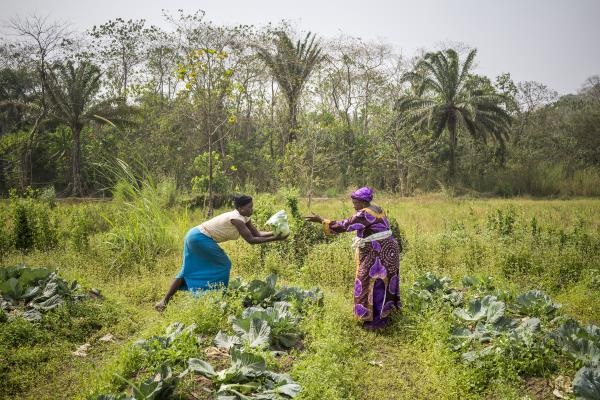
5 December 2016, ROME-Soil and pulses can make major contributions to the challenge of feeding the world's growing population and combating climate change, especially when deployed together, according to Soils and Pulses: Symbiosis for Life, a new report by the UN Food and Agriculture Organization released on World Soil Day.
"Soils and pulses embody a unique symbiosis that protects the environment, enhances productivity, contributes to adapting to climate change and provides fundamental nutrients to the soil and subsequent crops," said FAO Director-General José Graziano da Silva.
Pulses are environmentally resilient crops that deliver high-nutrition foods to people and critical nutrients to biological ecosystems. Soil, a non-renewable resource, is essential for plant life and 95 percent of the global food supply.
Pulses such as lentils, dry beans and chickpeas are nitrogen-fixing plants that can benefit soil health, leading to better growing conditions for themselves and for other plants. On average, cereals grown after pulses yield 1.5 tonnes more per hectare than those not preceded by pulses, which is equal to the effect of 100 kilograms of nitrogen fertilizer.
The new book illustrates a variety of ways that pulses and soils can be "strategic allies" in forging more sustainable food and agriculture systems.
Earlier today, FAO's Council - representing the Organization's member states - endorsed the Voluntary Guidelines for Sustainable Soil Management, a set of technical and policy recommendations on protecting the world's largest terrestrial pool of carbon. These guidelines - to be implemented at all levels - constitute the main tool to foster sustainable soil management and boost soil health.
In the efforts to advocate for and raise awareness about sustainable soil management, today the first ever Glinka World Soil Prize was awarded to the Instituto Geografico Agustin Codazzi from Colombia. The institute has a long tradition in promoting sustainable soil management in Colombia and for developing capacities of Latin American scientists. It currently has a critical role in post-conflict Colombia as it guides allocation of soils in the land restitution programme.
Pulses on the farm
One-third of the world's soils are now deemed degraded, due to a range of causes including acidification, salinization, erosion and urbanization, a matter of growing concern due to the intricate range of life-supporting ecosystem services they provide.
Introducing pulses as part of intercropping, cover crops and crop rotation farming techniques can help restore soil health. Legumes, the plant family of which pulses are a part, can grow with fewer nutrients than many others, while providing nitrogen, soluble phosphates and other needed compounds to soils.
"Pulses are architects of soil health," according to the report.
They host special soil bacteria enabling the biological fixation of nitrogen, a natural process that would cost an additional $10 billion a year in synthetic fertilizers. They also foster soil carbon sequestration and cleaner water filtration.
The world is currently losing soil 10 to 20 times faster than it is replenishing it, a trend pulses can help offset. The report cites a case study in India showing how growing pigeon peas reduced soil runoff and erosion by up to 59 percent.
Moreover, pulses - whose deep root systems boost their resilience in drought - are intrinsically "climate smart as they simultaneously adapt to climate change and contribute towards mitigating its effects" by boosting soil carbon sequestration capacities.
In the vast western wheat fields of Canada, the world's No. 2 pulse producer and leading exporter, the introduction of pulses into field rotation has trimmed the need for synthetic nitrogen by two-thirds, underscoring the substantial role pulses can play in lowering global greenhouse gas emissions.
Pulses on the plate
Pulses are a critical ally in addressing hunger, food insecurity, malnutrition and rural incomes, all cardinal goals in the Sustainable Development Agenda.
They have higher protein content - often three times as much as rice or cassava - than staple grains. Pulses also are a significant source of health-enhancing minerals, including iron, magnesium, potassium, phosphorous and zinc. Other dietary health attributes of pulses include high B-vitamin content, low fat content, no cholesterol and a low glycemic index. While low in calories, they are high in complex carbohydrates and dietary fibers.
Fodder from legume plants is also beneficial for livestock. Adding cowpea hay to rice feed helps cows in West Africa grow 50 percent faster.
Strategic and tailored use of optimal pulse-soil synergies will require more comprehensive data on soils. Through the Global Soil Partnership, FAO is leading international efforts aimed at enhancing the quantity and quality of soil data by establishing the Global Soil Information System, which is also essential to guide monitoring of sustainable soil management.